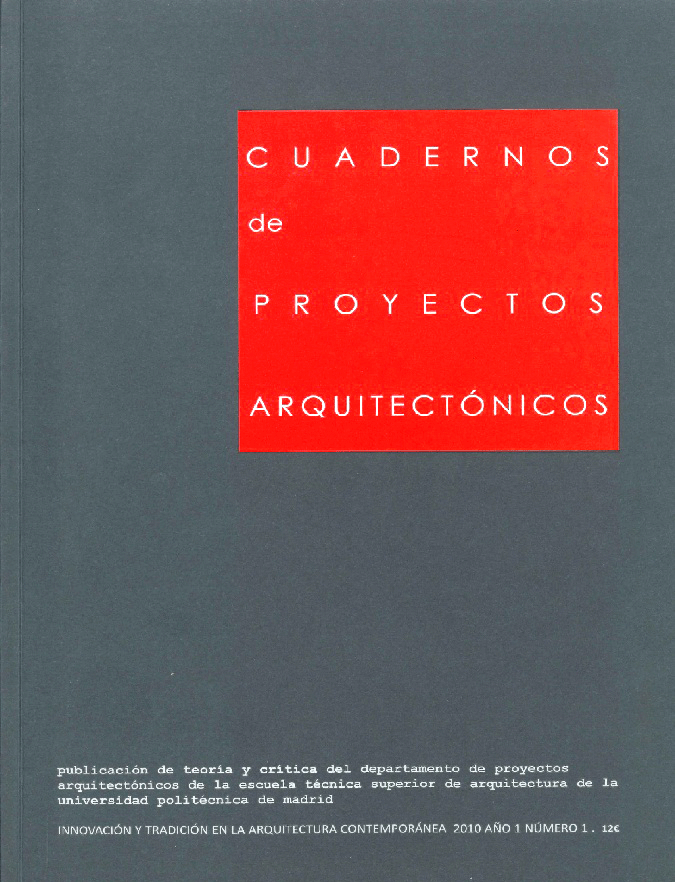Innovación y tradición en la arquitectura contemporanea o el verdadero reto de la época actual en el interior de la modernidad
DOI:
https://doi.org/10.20868/cpa.2010.1.126Palabras clave:
modern tradition architectureResumen
Many protagonists of today's architecture seem to possess the aim of transcending Modernist tradition. We have had reformers of the Modern Movement, who enriched it and gave it a noteworthy degree of pluralism, allowing for rationalism and organicism to live side by side. Today we live in a formalist world, without rules or criteria that cultivates surprise and spectacle. Innovation is just as necessary as it is inevitable, but taking innovation as an end in itself is, in our field of work, a stupid adherence to the supposed spirit of the age, that no one identifies. Innovation is possible only if it occurs based on modern tradition. In our times it is necessary for architecture to continue being an ecological activity, as it occured in the modern tradition. Speaking of "sustainable architecture" should simply be considered a redundancy. Conducting modern discovers towards satisfying the identity of architecture and ecology should be a universal goal. The current economic crisis should introduce within the mentality of contemporary architecture the intention of service to mass society with which the modernist revolution started and prospered. The modest and enriching management of the modernist legacy, the Innovación y recovery of the traditional identity between architecture and ecology, and the recuperation of social service are all qualities that should be implicit within the exercise of our profession. I also find these criteria an adequate program for the expression of our contemporary age
Descargas
Descargas
Publicado
Número
Sección
Licencia
1. Los autores conservan los derechos de autor y garantizan a la revista el derecho de una Licencia Creative Commons Atribución-NoComercial-SinDerivar 4.0 Internacional que permite a otros compartir el trabajo con un reconocimiento de la autoría.
2. Los autores pueden establecer por separado acuerdos adicionales para la distribución no exclusiva de la versión de la obra publicada en la revista (por ejemplo, situarlo en un repositorio institucional o publicarlo en un libro).













